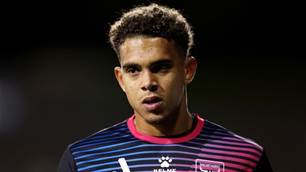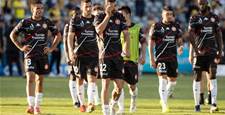Will the long-anticipated launch of a National Second Tier save the A-League from drowning in its own risk-averse predictability?
Whilst leagues across Europe serve up end of season promotion/relegation plot lines laced with intrigue and ladled with emotion, those at the wrong end of the A-League ladder get to lick their wounds and prepare to fight another day, happily spared the consequences of failure.
The A-League’s work place protection scheme has bucked an almost universal worldwide status quo since its inception 18 years ago. But there's a whiff of change in the air.
When the NST kicks off next March with a 10-16 team format, the dream of promotion/relegation finally arriving in the Australian marketplace will begin to crystallise in the minds of many.
According to Nick Galatas - chairman of the Association of Australian Football Clubs (AAFC) - the advent of the NST might light a fuse which ultimately invigorates the A-League.
Speaking after the announcement last week by FA that 26 clubs were left standing as the NST enters its Request for Proposal (RFP) phase, Galatas told FTBL: “That’s pretty special and we’re excited about it.
"There’s a lot of work still required by all the clubs and some pretty significant meetings with FA to weed out those who drop out and those who go forward.
"I’ve been saying this from day one - the National Second Tier will breath new life into the A-League."
Beyond the Australian bubble, under achievers are superseded by aspirational up-and-comers in a natural order of things which rewards excellence and brutally punishes those who fall short.
Meanwhile, back home a Ground Hog Day-like climate of congruity has descended on a competition which exploded with giddy excitement back in 2005, but has since suffered multiple upheavals.
“Eventually, when you get to promotion/relegation you’ll have the whole football community watching and following," added Galatas.
“There are a lot of positives out of all this , we just need to execute.
"Promotion/relegation, whilst we won’t see it immediately, creates incredible passion, and it’s something we don’t get to experience here in Australia because of our closed competitions.
"If we are able to change that it will be huge.”
Galatas is surprised there are still 26 clubs in the mix but expects natural attrition will trim the number down to 18-20 by the end of July.
After that comes an assessment and recommendation phase (July to August), with a final make up of the competition unveiled in October.
The hopefuls include a raft of the NSL old guard, clubs like APIA Leichhardt, Sydney Olympic FC, Sydney United 58, Marconi Stallions, South Melbourne, Heidelberg and Melbourne Knights.
“The fact that some of the old established clubs are still alive is a testament to their respective boards and communities,” added Galatas.
“South Melbourne (for example) were established in 1959 and they’re still here and relevant.”
The club posted a video clip on social media after alumni Ange Postecoglou clinched back-to-back titles with Celtic, rolling back the years to when a youthful Postecoglou went back-to-back with South Melbourne in the late 90s.
The video, shared by the Bhoys, generated almost 400,000 views.
It’s the sort of reach Galatas reckons proves NSL powers of yesteryear can still play a significant part in the game’s future.
The clubs left standing: APIA Leichhardt, Sydney Olympic FC, Sydney United 58, South Melbourne, Heidelberg, Melbourne Knights, Fraser Park FC, Marconi Stallions, Rockdale Ilinden, Sutherland Sharks FC/Cronulla Sharks, Wollongong Wolves, Canberra Croatia,
Gungahlin United, Brisbane City, Brisbane United FC (Wynnum Wolves FC, Brisbane Strikers FC, Virginia United FC), Gold Coast Knights, Gold Coast United,
Olympic FC, Sunshine Coast FC, Adelaide City, Football South Australia, Avondale,
Brunswick Juventus, Green Gully, Preston Lions, South Hobart.
© FTBL
Related Articles

Leckie seals new marquee deal as Good, Maclaren head to Asia

'He has big potential': UK move on cards for Bulls young gun













